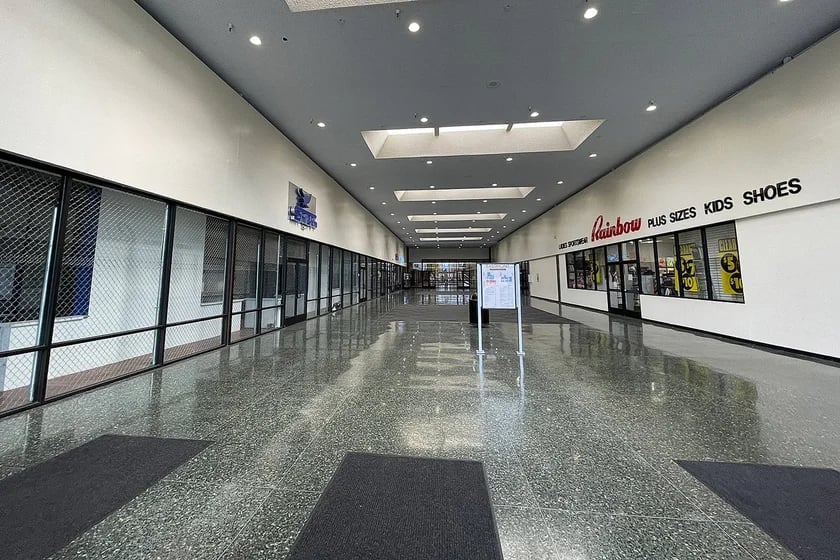The Life, Death, and Afterlife of the American Mall

Lili Loofbourow on that great symbol of capitalism, now hollowed out by (mostly) private equity and (partly) changing consumer habits:
They aren’t easy to physically dispense with, malls.
It’s no surprise, then, that people are desperately trying to find new uses for them. The afterlife of a dead mall is interesting. Schools are moving into malls; some students are completing high school in a converted Macy’s in Vermont. A Dillard’s in Texas is now a radio station. Malls are becoming home to community colleges and libraries and offices. The Eastmont Town Center in Oakland, California, is home to a Center for Elders’ Independence, Social Security offices, and a lab.
These efforts are noble and good. They are also—and can’t help but be—anti-makeovers. Malls were made to be malls. This means every effort to repurpose a mall becomes a fascinating performance of architectural insufficiency, of a bespoke thing being wrenched into a different, and more practical, and less entertaining, function. It’s not that you can’t have schools in malls—or libraries, or social services. It’s that malls, being temples to consumerism, were tailor-made to be exactly what they were. Trying to square-peg another operation amid the former makeup counters beside onetime dressing rooms makes the result seem impoverished, weird, jangled. The erosion of detail is essential, but it makes the space grim.
Americans get nervous when symbols change. If the American grocery store was, among other things, deployed as an active rebuke of Soviet scarcity in the Cold War, the American department store was a serene display of endless availability. There were more kinds of makeup than anyone could possibly want, and they all had loyalists. Can we adapt to a new idea of the mall, the way old maritime warehouses turned into loft-living for gentrifiers? Should we? A stroll through these deserts finds dots of life poking through: mom and pop stores offering to repair watches or do your dry cleaning or your hair. I visited the Eastmont Town Center recently to see what it looked like in its new incarnation as a hub for seniors and Social Security and a “self-sufficiency center” where an anchor store used to be. A security guard stopped me at the entrance: Without an appointment and a specific destination in hand, she would not let me in. It puzzles me that the building is less accessible as the site of a library than it was as a mall, but I love the idea of a mall serving people in need. Still, the new configuration isn’t scratching the itch a mall did—at least according to other nostalgic mallgoers who have tried to haunt its halls. As one Yelp review reads: “Not enough stores, too many social services.”
“Americans get nervous when symbols change” — I’m going to be thinking about that for a while.
Something I think about a lot is if they remade Back to the Future today. Marty would travel back in time to 1992, and probably accidentally invent dubstep or something. But if he and Doc still met in the parking lot at the shopping mall, it would be a very different, much more haunted place. And the time machine wouldn’t suddenly crash into pine trees, but would appear near the mall’s peak in popularity. The scene from 1955 where Marty marvels at the officious gas station attendants would be replaced by one of Marty at the mall, amazed at the sheer number of people shopping, walking, letting themselves see and be seen at the outlet that in his time is now home to a plasma bank.





Stay Connected